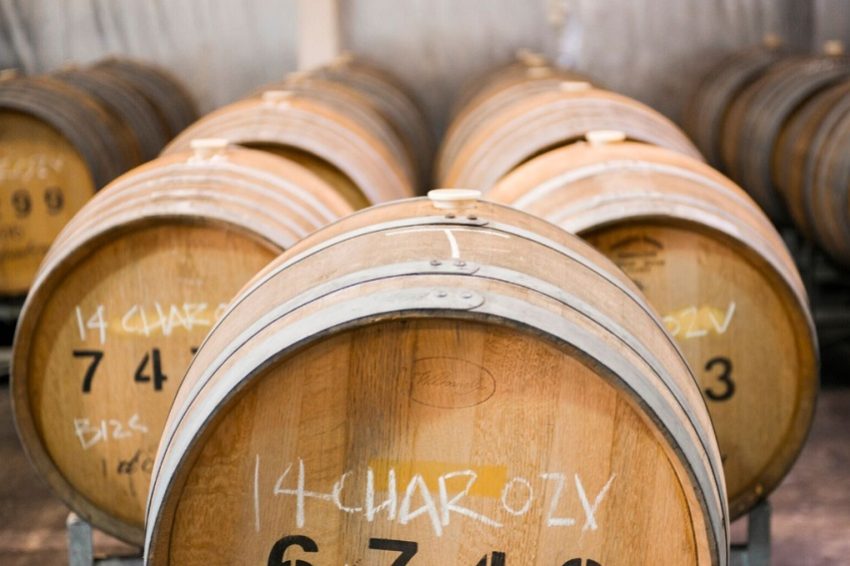Chardonnay gets lucky for d'Arenberg

A mix of restraint, experimentation and Lenswood fruit landed d’Arenberg’s 2016 Lucky Lizard Chardonnay in the top 10 of Hot 100 Wines South Australia last year.
 Chester Osborn, as he cheerfully admits, drinks a lot more French Burgundy – red and white – than the average punter. And while his consumption is primarily driven by enjoyment, it also means that when it comes to making Chardonnay, he has both an educated palate and an educated opinion (for many years, he judged Chardonnay at the National Wine Show).
Chester Osborn, as he cheerfully admits, drinks a lot more French Burgundy – red and white – than the average punter. And while his consumption is primarily driven by enjoyment, it also means that when it comes to making Chardonnay, he has both an educated palate and an educated opinion (for many years, he judged Chardonnay at the National Wine Show).
Chardonnay style in Australia has been fraught since the grape’s debut in the 1960s, with see-sawing approaches that at one extreme saw heavily ripened, forward-flavoured fruit-bombs unsubtly boosted with entire park-benches of toasty oak, and at the other a monastic model of understated fruit that shunned any complexity beyond fermentation in stainless steel.
Osborn, the heir, head winemaker and chief mischief-maker of d’Arenberg, has emerged, perhaps surprisingly, as an advocate of a middle way, and the 2016 Lucky Lizard Chardonnay, a top 10 winner in Hot 100 Wines, puts his philosophy in a bottle. While the Lucky Lizard Chardonnay uses some of the range of winemaking bells and whistles (gentle crushing, oak treatment, batonage (stirring) and maturation on lees) it’s all done with restraint.
Restraint can be overdone, and Osborn has no love for the school of thought that uses early picked fruit and scant barrel treatment to make tight, lean wines in a bid to emulate the wines of Chablis. He says the wines usually show little fruit character: “It ends up a bit neutral and a bit thin sometimes.”
And while he is no fan of what he calls the Dolly Parton style of Chardonnay, Osborn says that for him up-front fruit remains a key factor, but it must be balanced by “lovely, zippy minerality”.
The main way to achieve this is to pick your fruit at the right time. Osborn says this is not simply a matter of taking a baume measure; he prefers to pop a grape in his mouth.
“It’s all in the taste. You’ve got to get the tannins in that perfect spot, where you get that crunchy Granny Smith character.”

Like many other serious makers of white wines based in McLaren Vale, d’Arenberg gets most of its top-flight white grapes, which include Riesling and Sauvignon Blanc as well as Chardonnay, from the Adelaide Hills. The Lucky Lizard fruit comes from Lenswood, which boasts the highest altitude vines in the state, and where old apple vineyards now share the landscape with vineyard sprawl.
Osborn sees the emergence of cool-climate vineyards as crucial to the quality of Australian Chardonnay, and he specifically singles out the unique character of Adelaide Hills as having the potential for not just good but great Chardonnay.
“The great thing the Adelaide Hills fruit has is a slightly passionfruit, grapefruit lift in amongst the Granny Smith apple character, and it really stands out compared to other regions around Australia or around the world,” Osborn says. “To me, it’s one of the best regions for Chardonnay in the world and is not as recognised as it should be.”
Osborn has added his own winemaking twist, based on Burgundian practice.
“The other thing I do is to use solids in the ferment. I went to Burgundy in 1984 and I was interested in the way they scoop the top part of the solids out of the tanks and put them back in the barrel for ferment. It’s basically pulp, and it gives a little extra minerality and it actually makes your wine age more gracefully.”

He also eschews toasted oak. David Wynn, one of Chardonnay’s Australian pioneers, thought overuse of toasted oak was a curse in that it produced wines that were effectively “smoked”. Osborn avoids the trap by specifying “lower than woah” toasting in his barrels: “That way I don’t get any of that caramel sweetness or toasty cedary tannin.” And he keeps new oak to a judicious minimum, using a mix of one–, two– and three-year-old French barrels.
“If anything, we’re getting really fine, slightly fruity tannins from the oak – greenness in a nice way – that links in with that apple crunchy minerality at the end.”